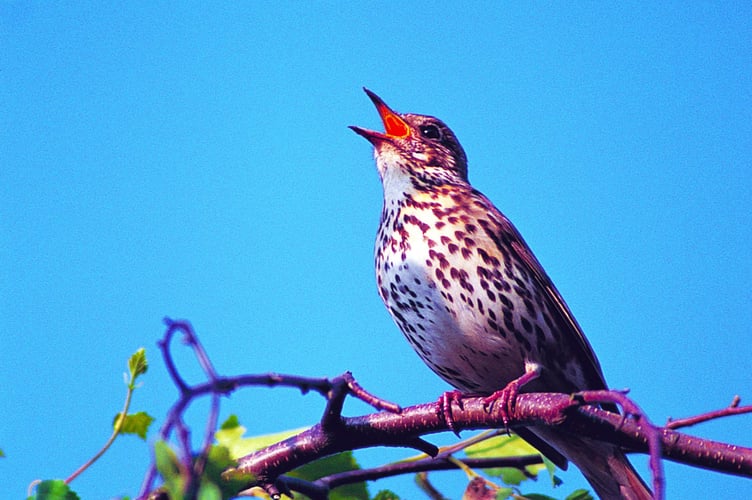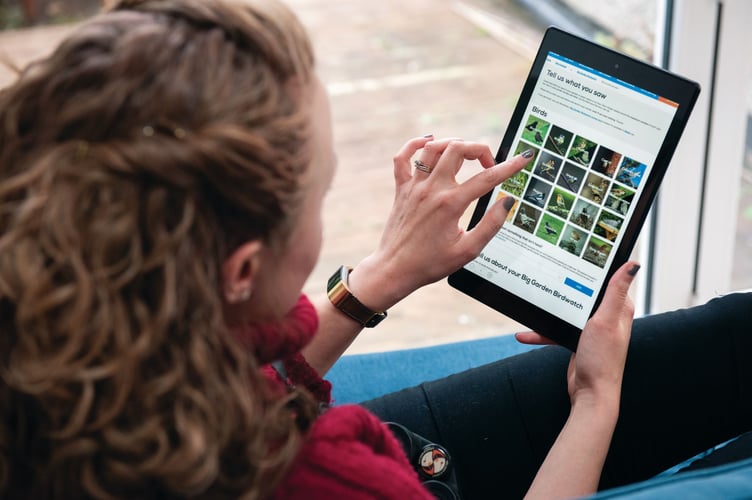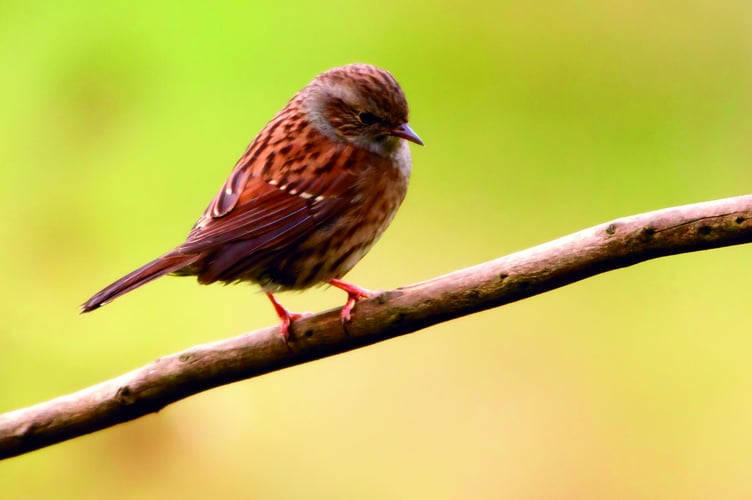THE world’s largest garden wildlife survey returns this weekend. Hundreds of thousands of people are predicted to watch and count the UK’s garden birds for the Big Garden Birdwatch, being run by the Royal Society for the Protection of Birds (RSPB).
Over a million people took part in 2021, making it the biggest Birdwatch ever. They counted 17 million birds.
To take part in the Big Garden Birdwatch 2022, just spend an hour of your time at some point over Friday to Sunday recording the birds that land as seen from your window, balcony or garden, or in your local park. Only count the birds that land, not those flying over. The RSPB would like to know the highest number of each bird species you see at any one time, not the total you see in the hour. This avoids many visits to your patch by the same friendly robin being counted as several birds, not one!

We’ve seen during the COVID-19 pandemic how important the natural world is to our mental health and wellbeing. There has been a surge in interest in the nature on our doorsteps and many people have said that observing garden birds has brought joy and comfort during unsettling times.
You don’t need to know anything about birds to enjoy watching them. Neither do you need any expensive equipment or expert knowledge. The most important “tools” are your eyes, ears and brain! Then it's a natural progression to go from enjoying watching a bird going about its business to asking what kind of bird it is. You can soon learn to identify any bird you come across. Every bird you see is different in some way and, if you want to, you can spend a lifetime learning about them.
Now in its 43rd year, the RSPB’s Big Garden Birdwatch is the largest garden wildlife citizen science project in the world. Over 150 million birds have been counted, giving the RSPB an astonishing amount of insight into how our wildlife is faring.
For four decades, Big Garden Birdwatch has highlighted the winners and losers in the garden bird world. Last year, the blue tit topped of Surrey’s rankings as the most commonly seen garden bird. The house sparrow and woodpigeon completed the top three.
House sparrows and starlings are the UK’s most sighted birds, but a closer look at Big Garden Birdwatch data shows that numbers have in fact dropped dramatically since the Birdwatch began in 1979. House sparrows are down 58% while starlings are down 83%.

Beccy Speight, the RSPB’s chief executive,said: “By taking part in the Birdwatch, you are helping to build an annual snapshot of how our birdlife is doing across the UK. It is only by us understanding how our wildlife is faring that we can protect it. We know that nature is in crisis but together, we can take action to solve the problems facing nature.
“Whether you saw one blackbird, twenty starlings or no birds whatsoever, it is really valuable information as it helps us build a picture of how our garden birds are faring from one year to the next.
“We were blown away by the enthusiasm with which people took part in the Birdwatch in 2021. We know that for many people, garden birds provide an important connection to the wider natural world and bring enormous joy. Over the last year, there has been a broad and much-needed realisation that nature is an important and necessary part of our lives especially for our mental health and wellbeing.”

The parallel event RSPB Big Schools’ Birdwatch is running until 21 February 2022. In 2021, it celebrated its 20th anniversary of connecting children with nature in their school grounds. Since its launch, over a million school children and teachers have taken part. Further information can be found at www.rspb.org.uk/schoolswatch
- For a free Big Garden Birdwatch guide, which includes a bird identification chart, tips for your birdwatch, an RSPB shop voucher, and advice on attracting wildlife to your garden, visit www.rspb.org.uk/birdwatch or text BIRD to 70030.




